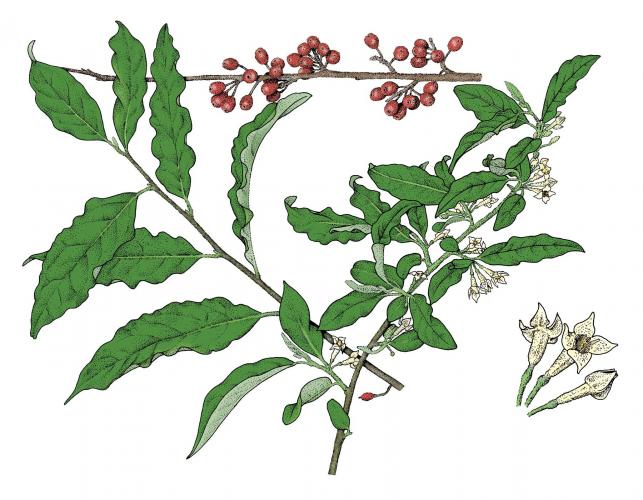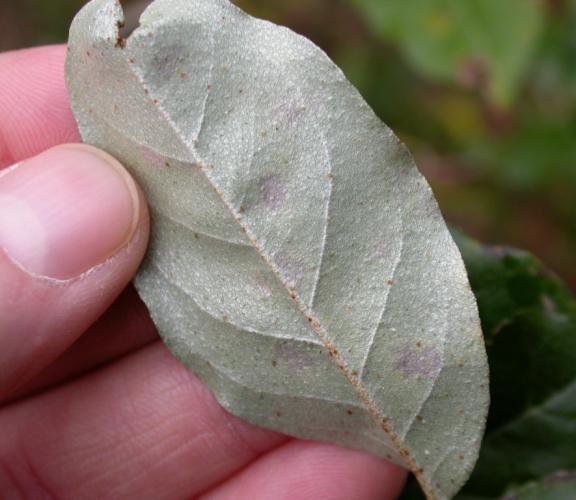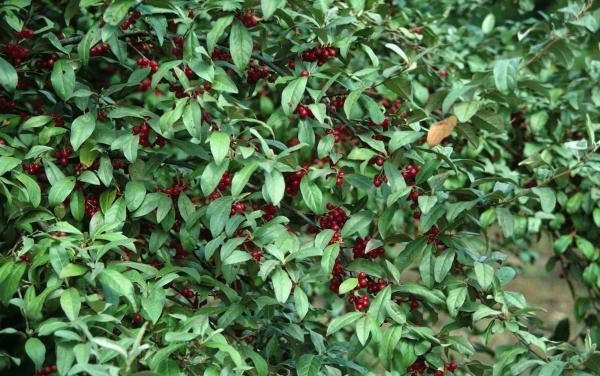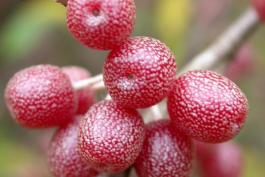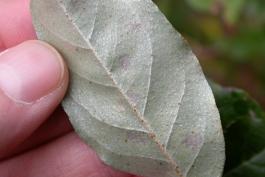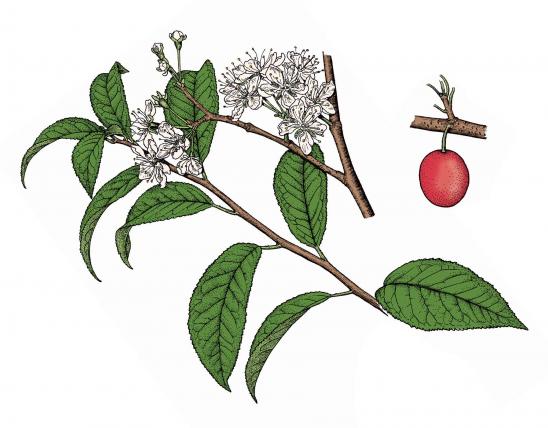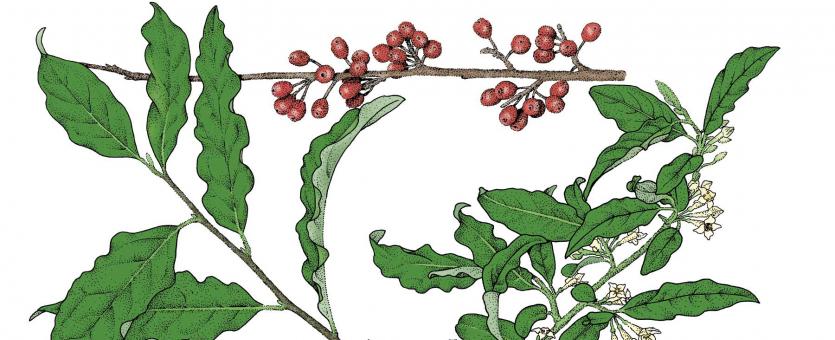
Autumn olive is a medium to large, multistemmed shrub, often reaching heights of 20 feet. Sometimes there are a few thorns on the twigs.
The leaves, borne alternately on the stems, are generally oval, 1–3 inches long, wavy, and lack teeth. The upper surface of leaves is dark green to grayish green, while the lower surface is covered with silvery white scales, a conspicuous characteristic that can be seen from a distance.
Flowers are small, light yellow, fragrant, borne in clusters along twigs, and bloom in late April and May. The outsides of the flowers have small, silvery scales.
Fruits are small (less than ¼ inch), fleshy, juicy, start as yellowish and ripen from pink to red, with speckles. They are finely dotted with pale scales and are produced in abundance each year.
Similar species: Russian olive (E. angustifolia) has both sides of leaves (at least when the leaves are young) covered with only silvery scales, making top and bottom sides look silvery, while autumn olive has few scales on the upper surface, making it look green, and the lower surface, though covered with mostly silvery scales, also always has a few rusty scales interspersed with them.
Height: to 20 feet; spread: 25 feet.
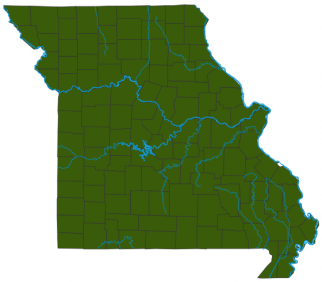
Recorded in 32 Missouri counties, but due to extensive planting, it is probably present statewide.
Habitat and Conservation
This shrub grows in sand, loam, or clay-based soils and prefers substrates with a neutral pH. It often grows in poor soils thanks to its nitrogen-fixing roots. It can grow in light shade but prefers full sun. It is drought tolerant and invades grasslands and sparse woodlands, though it is more prevalent in disturbed areas, pastures, and fields. Autumn olive is rarely encountered in dense forests or in very wet sites.
Status
Invasive. It was studied in the 1940s by the Soil Conservation Service, and the strain 'Cardinal' was released in 1963 for commercial propagation. In the eastern and central United States, autumn olive was planted to provide food and cover for wildlife, as screens, windbreaks, and barriers along highways, to stabilize and revegetate road banks, and to reclaim mine spoil. For some years after planting the plant seems contained, but then it suddenly becomes invasive and difficult to control. Birds and small mammals eat the berries and disperse the seeds.
Life Cycle
Plants flower and develop fruits annually after reaching 3 years of age, although 2-year-old plants have been known to flower. A single plant can produce up to 8 pounds of fruit. Seed dispersal appears to be mainly by falling fruit and by birds. Birds seem to be the primary vector for dispersal, although raccoons, skunks, and opossums are also known to eat the fruit. This species is highly invasive and difficult to control. Burned, mowed, or cut plants will resprout vigorously.
Control
Human Connections
Native to a great portion of the Asian continent, autumn olive has a long history as a human fruit plant and has been cultivated since 1830. Autumn olive’s invasive nature far outweighs any useful qualities, and its cultivation is strongly discouraged.
Ecosystem Connections
This non-leguminous, nitrogen-fixing woody shrub can adversely affect the nitrogen cycle of the native communities that depend on infertile soils. These characteristics make it an aggressive and competitive threat to native species in open communities such as prairies, savannas, and woodlands.
Taxonomically, autumn olive and Russian olive are not true olives. True olives are in genus Olea, in the olive family (Oleaceae). European olive (Olea europaea) is the species that produces the well-known edible fruits and olive oil; it is grown as an ornamental in warmer climates, but it does not survive Missouri’s winters.
